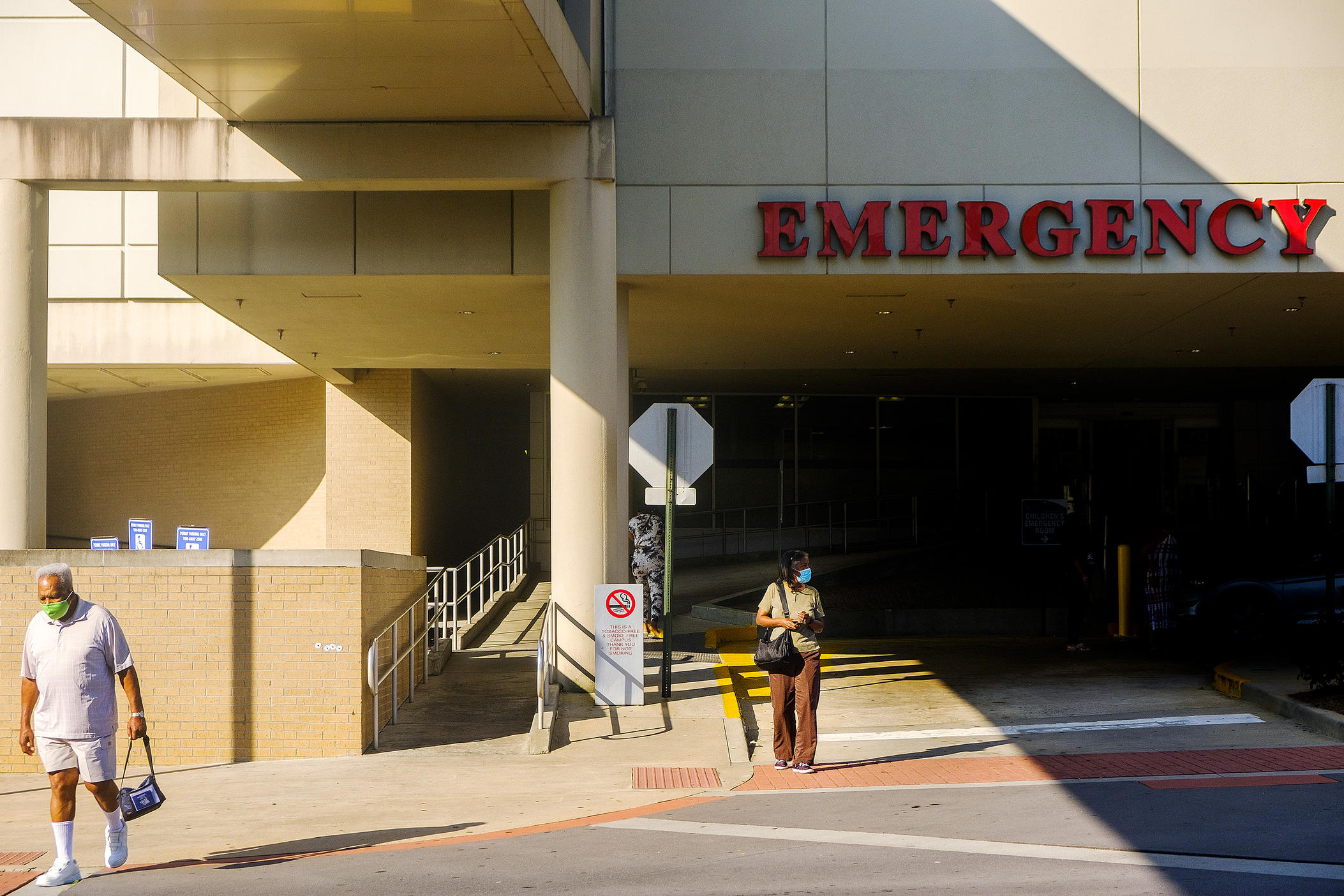Section Branding
Header Content
Trauma care in Georgia is strained, and a rural review points to systemic failures
Primary Content
It’s been 14 years since the last review of Georgia’s trauma care system by the American College of Surgeons. The group's latest findings describe a system with few guidelines for getting patients, often with life-threatening injuries, to the best equipped hospitals.
This is not news to staff at Crisp Regional Hospital. It sits off a strip of I-75 running south of Macon down to the border with Florida. This area has an unfortunate nickname: “corridor of death.”
The nickname refers to a lack of emergency care. But emergency medical services director for Crisp County, David Edwards, said “corridor of death” can be misleading. There are hospitals and ambulances south of Macon.
“That term just implies that there's just not a lot of trauma services readily available through that route,” Edwards said.
Trauma centers see patients with critical injuries, like from a car crash, firearm or a bad fall. Statewide, there are only nine designated trauma centers south of Macon, not including the one in town, to treat those patients. North of Macon, there are 20, plus two pediatric trauma centers.
On the heels of the closure of Atlanta Medical Center, the people who understand Georgia’s trauma system best say across the state, there’s a lot of improvements to make, and rural trauma hospitals are especially susceptible to these vulnerabilities.
“The goal, obviously, is to get the right person to the right place at the right time,” Edwards said. “And sometimes that's just difficult to do.”
In January, representatives from the American College of Surgeons heard testimony from nurses, hospital directors and public health administrators who all shared similar stories about limited trauma services in rural Georgia.
“We had a patient that we really are not positioned to take care of that we've held for nine hours in our emergency department,” said CEO of Jeff Davis Hospital, Barry Bloom.
“Realistically, as a paramedic, an hour away from a level one trauma center, an hour and a half away from a level one trauma center, it's like me trying to fly to the moon with a seriously injured patient,” said emergency service provider Rafe Waters.
This was the second review of Georgia’s trauma system by the American College of Surgeons, which sets most standards for trauma hospitals in the state. The state Office of Emergency Medical Services and Trauma Facilities signs off on trauma center designations for hospitals, but both agencies conduct site visits.
A final report from the visit published in April points to several problems, and they are all about logistics.
Imagine an airport, like Hartsfield-Jackson. Now imagine landing all those planes without a control tower.
The Georgia Coordinating Center hosted by Grady Memorial Hospital could play that role, but some designated centers don’t even use it. The dashboard shows patient distribution across facilities in the state’s 10 EMS regions.
“I'll be honest with you; I didn't even know that existed,” said trauma director and general surgeon at Crisp Regional Hospital, Alicia Register.
The review team from the American College of Surgeons found there isn’t an agreed-on rule book or leading agency telling trauma hospitals in the system how to work with each other. There’s not even one definition for when a center is at capacity, known as being “on diversion.”
And the report recognizes that rural hospitals, especially in South Georgia like Register’s in Crisp County, are most affected by these flaws in the system.
“We're kind of one of the most — I hate to say desolate, but yeah, like we're one of the most desolate regions in Georgia,” Register said.
There are four levels of trauma hospitals, with Level 1 being the most specialized. Crisp Regional Hospital is a Level 3. Register spends a lot of her time trying to transfer patients who are up against the clock to a better resourced facility.
“It can get frustrating, to say the least, when you feel like ‘I don't have the resources, I know they need something more, but it's taken a really long time for me to get help,’” Register said.
During the system review in January, Register told the panel there’s been times when she's spent up to two hours just finding a place for a patient to go, a distraction from the other care she has to provide.
Liz Atkins is the executive director of the Georgia Trauma Commission, which oversees and disburses state funds to the trauma system network.
Atkins said there might as well be as many ways for a hospital to manage trauma transfers as there are counties in the state.
“Everybody likes the freedom to do what they want to do in their jurisdiction,” Atkins said. “If every single 159-county service in Georgia is able to determine their own destination protocols, then we have no standardization.”
And standardization is the “gold standard” for quality care. Atkins says that’s why the state needs a new trauma system rule book.
“We need to scrap the plan and start fresh,” Atkins said during the American College of Surgeons review.
But there’s hardly any reliable data on how quickly trauma patients are transferred between Georgia hospitals. Atkins said the data exists, but there’s no system to aggregate it yet.
That makes it nearly impossible to know where to start making changes.


